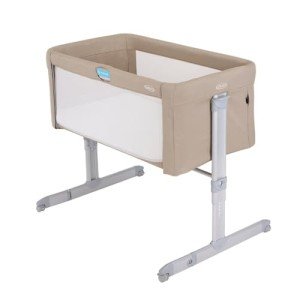The Essential Guide to Bedside Cots for Comfortable Sleep
In the journey of being a parent, among the most significant obstacles new parents face is guaranteeing their baby sleeps easily while also approving them peace of mind. Bedside cots, likewise understood as co-sleepers or bedside sleepers, have actually acquired appeal as a service to this dilemma. By allowing parents to keep their infants close during the night, these cots promote security, convenience, and comfort. This article looks into the benefits, functions, and aspects to consider when choosing a bedside cot, alongside responding to frequently asked questions to help parents in making informed choices.
What is a Bedside Cot?
A bedside cot is a type of crib designed to be positioned beside the parent's bed. Numerous designs feature a side that can be reduced or totally gotten rid of, permitting easy access to the baby during sleep. This design not just helps with nighttime feedings but also develops a safe sleeping environment for infants.
Table: Features of Popular Bedside Cots
| Function | Description |
|---|---|
| Safety Standards | Need to fulfill or exceed safety compliance guidelines (e.g., ASTM, CPSC) |
| Height Adjustment | Adjustable legs to accommodate numerous bed heights |
| Breathable Materials | Mesh sides for ventilation and visibility |
| Mobility | Lightweight and collapsible for easy transport |
| Storage Options | Integrated storage solutions for keeping fundamentals close |
Benefits of Using a Bedside Cot
Enhanced Convenience
One of the primary advantages of bedside cots is convenience. Parents can quickly address their baby's needs without needing to leave their bed. This can be specifically useful throughout late-night feedings or diaper changes.
Improved Bonding
Having the ability to see and hear their infant throughout the night cultivates a stronger psychological connection. Babies feel more secure when they are close to their parents, which can lead to much better sleep for both celebrations.
Lowered Risk of SIDS
Some research studies recommend that co-sleeping in a bedside cot might lower the risk of Sudden Infant Death Syndrome (SIDS), as parents are more most likely to see if their baby is having trouble breathing or is in distress.
Encourages Independent Sleep
While infants might at first depend on nearness to go to sleep, having a bedside cot can motivate them to develop independent sleeping habits over time. This setup enables a smooth shift from proximity to self-reliance.
Factors to Consider When Choosing a Bedside Cot
- Safety Standards: Always confirm that the cot adheres to the current safety guidelines. Cots 4 Tots for accreditations suggesting compliance with safety standards.
- Size and Fit: Ensure the cot fits snugly beside the moms and dad's bed. Adjustable height settings are an essential feature to accommodate various bed types.
- Product Quality: Opt for cots made from non-toxic materials with breathable materials. This guarantees the baby is safe while also enabling good airflow.
- Reduce of Use: Look for features that boost use, such as easy foldability, removable sides, and convenient storage compartments.
- Portability: If you travel often, consider a cot that is light-weight and easy to disassemble or transfer.
Popular Bedside Cot Options
The market is flooded with alternatives, making it important to pick carefully. Here are some popular choices:
1. Chicco Next2Me
- Adjustable height settings
- Easy attachment system
- Breathable mesh side panels
2. Halo Bassinest
- Turns 360 degrees for easy access
- Nightlight and relaxing noises
- Adjustable height to fit numerous beds
3. BabyBjörn Cradle
- Basic design with natural aspects
- Rocking feature to soothe the baby
- Compact size for easy positioning
4. Cuddle Me Organic
- Made from non-toxic products
- Supplies gentle co-sleeping support
- Portable and easy to bring
5. Fisher-Price Soothing Motions Bassinet
- Gentle movement and relaxing vibrations
- Variety of noises to relieve infants
- Adjustable height for bedside use
FAQs About Bedside Cots
1. Are bedside cots safe for newborns?
Yes, bedside cots are developed specifically for infants and stick to strict safety requirements. However, constantly ensure proper setup and follow manufacturer guidelines.
2. What is the advised age for utilizing a bedside cot?
Generally, bedside cots are safe for use from birth till the baby starts to rise on their hands or knees, usually around 6 months of age.
3. How do I clean up a bedside cot?
Follow the maker's cleansing directions. Most designs include detachable and washable material covers for easy maintenance.
4. Can bedside cots be used with all bed types?
Lots of bedside cots offer adjustable heights and can be adapted for numerous bed styles, including platform and tall beds.
5. How do I understand if my baby is prepared to shift from the cot?
Indications might consist of increased mobility and the capability to stay up or crawl. Constantly speak with a pediatrician if unsure about transitioning.
Bedside cots offer new parents a trustworthy and comfortable service for infant sleep needs, blending security with the convenience of keeping babies close throughout the night. By understanding their features and advantages, along with considering necessary aspects when choosing one, parents can enhance their and their kid's sleep experience. By providing a supporting environment for sleep, bedside cots add to the overall well-being of both parents and infants, making the journey into being a parent just a bit simpler.

